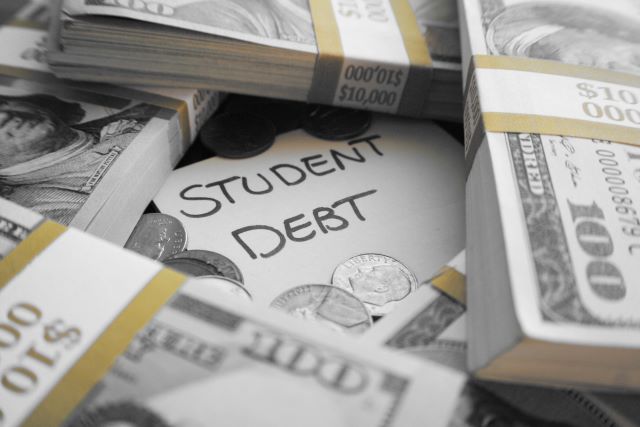
According to Education Department data, more than 42 million Americans hold $1.59 trillion in federal student loan debt. While a decision is still being made on student loan forgiveness, some people are paying off their federal student loans using strategies that work. Recently, Juan Diego Vila, currently a manufacturing engineer at Texas Instruments, made headlines for erasing more than $30,000 in student loans over six months.
During Vila’s first year at the University of Central Florida (UCF), he considered dropping out, but he was able to earn scholarships that paid for 85 percent of his tuition. Although half of UCF students reportedly graduate with no debt, Vila still ended up incurring more than the average UCF student.
“I really didn’t think about the long-term financial consequences to student loans. I just knew I needed money,” Vila told UCF in an interview.
While in college, Vila had part-time jobs at Chick-fil-A, 4 Rivers Smokehouse, and an aquarium shop in addition to Limbitless, a non-profit organization at UCF, which specializes in creating and donating personalized 3D-printed prosthetic arms for children.
Vila and some of his classmates developed an electric wheel system that can attach to the back of any manual wheelchair to transform it into a fully electric wheelchair. His company, Citryne, has a provisional patent for the product.
After he graduated, Vila put together a plan to pay off his debt. He credits his inspiration to 7 Baby Steps compiled by the author, radio show host, and businessman Dave Ramsey.
Baby Step 1: Save $1,000 for your starter emergency fund.
In the last semester of college, Vila saved $1,000 from his part-time jobs. He also looked at how many paychecks it would take to pay off his debt. At Texas Instruments, Vila’s base pay started at $76,000 and he also got a $10,000 bonus to sign on.
“That $10,000 immediately went into my debt so that was a really nice jump-start,” Vila told UCF.
Baby Step 2: Pay off all debt using the debt snowball.
“Every single month, I would put about $3,000 into nothing but debt,” he continued. “About 50 percent of the money I was making every month would go straight to my student debt. The rest was to live and have fun.”
Vila traveled abroad, hung out with friends, and went to music festivals. “The way that Dave Ramsey explains it is, it’s an every-dollar budget. You know where every dollar that you are spending is going. Every dollar has been planned. That doesn’t mean that it has to all go toward debt. Some of it can go toward having fun.”
‘There’s no better reward than releasing financial pressure.’
Vila also noted that a lot of people who graduate decide that because of their hard work to get their degree, they want to reward themselves with a brand new car or a house while still being in student debt.
“You should instead reward yourself by getting out of debt,” he advised. “There’s no better reward than releasing that financial pressure. You have to know where all your money is going. Sometimes your friends are going to want to go out on a day that you hadn’t planned on spending money. And you just have to be willing to say, No. I’m on a mission and there’s nothing that can stop me.”
Is college debt worth it?
Vila told UCF that he would have never gotten the job he has at Texas Instruments if it wasn’t for his engineering degree.
“I think it’s OK that you have to pay for the value,” he said. “So if you can’t afford it and you have to go into student debt, that’s OK. Just pay it off as quickly as possible.”
Read the full interview here.
The U.S. Army Corps of Engineers has been tasked with…
Brown and Caldwell, a leading environmental engineering and construction firm,…
Humboldt State University, one of four campuses within the California…